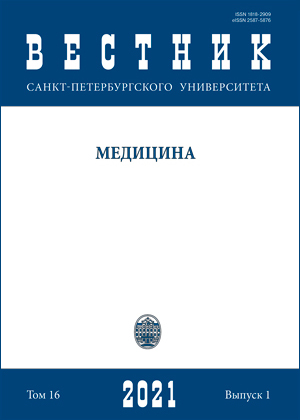Mechanism of antisurdant action of triazin-indole derivative at experimental acoustic trauma
DOI:
https://doi.org/10.21638/spbu11.2021.102Abstract
In our research performed using model of acoustic trauma at experimental animals (female of hybrids F1 of CBA and C57BL/6 lines) influence of triazin-indole at expression level of hypoxia induced factor (HIF) in Corti’s organ was studied at its therapy application. As a reference drug cytoflavin was used. Investigated drug in the form of 1 % solution was introduced into animals parenterally in dosage 5, 7, 10 mg/kg with 2 hr intervals after acoustic impact. Injection of cytoflavin as reference drag was performed in 1.7 ml/kg dosage. Level of HIF expression in the drug of Corti’s organ was estimated using immunohistochemical method. It was found out that triazin-indole derivative increases HIF expression in Corti’s cells and in neurons of spiral ganglion at acoustical traumatic impact depending on drug dosage increase. Maximal HIF expression in Corti’s cells and in ganglions were noted at therapeutic dose of the drug 10 mg/kg. In control group and in the group with application citoflavin in dose 1.7 ml/kg minimal HIF expression was observed. According to obtained results of performed investigation the authors concluded that antisurdant property of triazin-indole derivative is realized through the influence on HIF metabolism (probably, by blockage of prolyl hydroxylase) and enables to consider it as a target molecular during the drug application.
Keywords:
hypoxia, induced fator, HIF-1, acoustical trauma, antihypoxic drugs, triasin-indole, expression, laboratory animals, mean cytochemical coefficient
Downloads
References
References
Downloads
Published
How to Cite
Issue
Section
License
Articles of "Vestnik of Saint Petersburg University. Medicine" are open access distributed under the terms of the License Agreement with Saint Petersburg State University, which permits to the authors unrestricted distribution and self-archiving free of charge.




